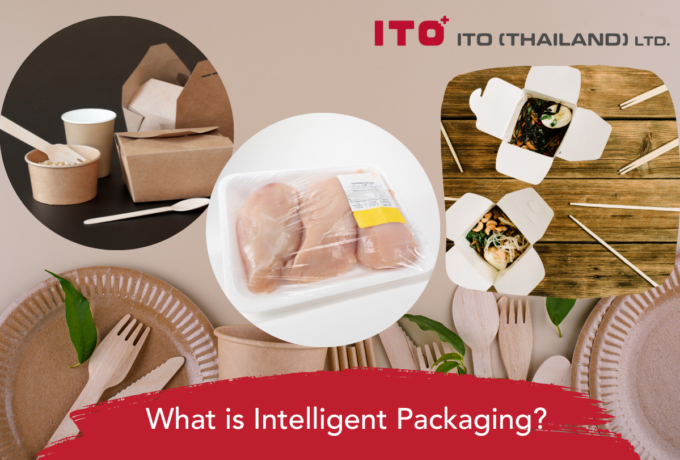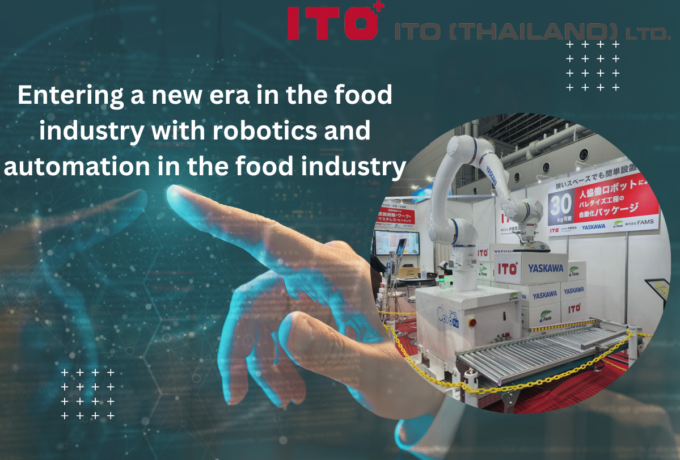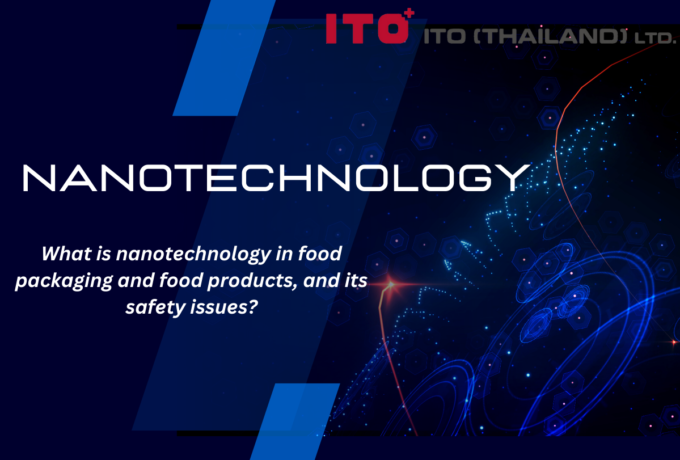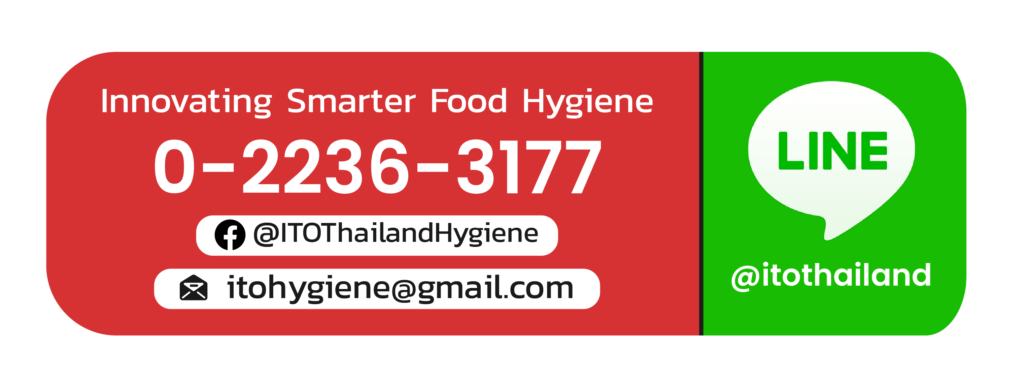ITO Thailand Hygiene Blog
Did you know that light can kill microorganisms?
In the food industry, UV-C light is used to disinfect surfaces of equipment and various machines. Nowadays the principle of using light to kill microorganisms is used to develop a pulsed light technology to reduce microorganisms in food without using heat (non-thermal process) in order to maintain the quality and nutritional values of food
Working principle
The conventional UV light sterilization would apply continuous UV-C irradiation, with the wavelength range having the greatest sterilization effect at 250-260 nanometres (Abida et al., 2014). On the contrary, the use of pulsed light would be using flashing light to burst out pulsating energy (could be in microseconds or milliseconds). It is reported that using light in this manner produces more energy than continuous light, allowing it to penetrate the surface of the material much deeper than continuous light. The more the light flickers, the higher the energy (Palmieri & Palmieri, 2005) and it can be twenty thousand times the intensity of natural light (Mandal et al., 2020). This light energy will cause 3 mechanisms to inhibit microorganisms namely photochemical mechanism, photothermal mechanism, and photophysical mechanism. Only one mechanism can occur or multiple ones can occur simultaneously.
The photochemical mechanism is caused by the way light energy reacts with the DNA genetic materials in the microbial cells necessary for multiplication. It will break the bonds in the molecule causing the DNA of the microorganisms to be rearranged or the DNA strand destroyed, causing the microorganisms to die or unable to multiply (Palmieri & Palmieri, 2005). This is considered the main mechanism of microbial destruction.
The photothermal mechanism is caused by spores or microbial cells absorbing large amounts of light energy rapidly. It produces a short heat that causes the local spores or the microbial cells to denature or die (Abida et al., 2014).
The photophysical mechanism: It is reported that pulsating light can damage the microbial cell walls, causing plasma membrane contractions or cellular component leakage (Mandal et al., 2020).
Advantages and limitations
The advantages of UV light sterilization are: It can reduce the microbial count on surfaces under temperature constraints without using chemicals. This allows these foods to maintain the same good quality with greater biosecurity, especially foods that contain heat sensitive components such as protein denaturation, decomposition or transformation of vitamins and antioxidants and evaporation of flavouring agents, etc. However, the use of UV light is still limited whereby food must have properties that allow the light to pass through in order to reduce the amount of bacteria in it. Therefore, it is commonly used as a surface disinfectant (e.g. eggshells, cut fruit and vegetable skins, food contact surfaces or packaging surfaces) or in products that allow light to pass through, such as drinking water, juice, etc.
Effect on food quality
Research papers by Mandal et al. (2020) were compiled on the effect of pulsed light on food quality. In terms of sensory quality such as colour, texture, smell, taste, there were also reports that no difference was found in the product after the use of pulsed light in the group of fruits and fruit products such as strawberries, blueberries, raspberries. Research reports that found decreased sensory quality reported on colour changes in fruits and vegetables, and meat. It is assumed that light energy catalyses the oxidation of colour-related food constituents such as carotenoids and myoglobin, causing the colours to change.
Some studies have found that the texture of fruits and vegetables changes due to heat. This may be caused by the high concentration of light energy leading to the photothermal mechanism. In terms of flavours, light energy may catalyse a reaction that causes rancidity from fat oxidation, causing changes in the flavour of food in high-fat such as milk and dairy products
In the study of the effect on nutritional values, it was found that the pulsed light saw a slight loss of nutrients in light-sensitive and oxidative groups, such as vitamin B2, vitamin E, and vitamin C. However, some studies found that the phytochemical content in fruits and vegetables increased after the light treatment. It is thought to be caused by the mechanism of plants towards light. For example, one study found that the antioxidant Resveratrol in grapes increased tenfold (Cantos et al., 2001).
Therefore, the use of light sterilization requires study and design of processes suitable for each food product in order to have the right energy that can kill microorganisms sufficiently without using too much light energy that significantly affects the quality of food.
Laws on the use of UV light in food
In terms of legal requirements, the United States Food and Drug Administration (USFDA) has issued permission requirements for both the use of UVC light and pulsed light technology. For UVC light, there are permission requirements for use to control surface microorganisms, disinfection of water for food production, and reduction of pathogenic microorganisms in juice.
As for the pulsed light technology, it is allowed to be used for the purpose of killing microorganisms on the surface. The nature of the light source, light wavelength, period of use, and usable stored energy are specified (USFDA, 2020).
References
1. Abida, J., Rayees, B., & Masoodi, F. A. (2014). Pulsed light technology: a novel method for food preservation (review article). International Food Research Journal 21(3), 839-848.
2. Cantos, E., Espín, J. C., & Tomás-Barberán, F. A. (2001). Postharvest induction modeling method using UV irradiation pulses for obtaining resveratrol-enriched table grapes: a new “functional” fruit?. Journal of Agricultural and Food Chemistry, 49(10), 5052-5058.
3. Mandal, R., Mohammadi, X., Wiktor, A., Singh, A., & Pratap Singh, A. (2020). Applications of pulsed light decontamination technology in food processing: an overview. Applied Sciences, 10(10), 3606.
4. Palmieri, L., & Palmieri, L. (2005). High Intensity Pulsed Light Technology. In D.-W. Sun, Emerging Technologies for Food Processing (pp. 279-306). California: Elsevier.
5. USFDA. (Last Updated: 11/10/2020). Retrieved from CFR – Code of Federal Regulations Title 21: Part 179 Irradiation in the production, processing and handling of food. https://www.accessdata.fda.gov/scripts/cdrh/cfdocs/cfcfr/CFRSearch.cfm?CFRPart=179&showFR=1
Related Post
-

Biodegradable Packaging
As straightforward as its name, it means any packaging that will naturally fall apart and decompose. In recent years, biodegradable packaging has been included as one of the sustainable development goals for several organisations. A similar issue, bioplastics, an alternative to sustainable living, was discussed in a previous blog. However, there are some differences between them. For example, bioplastics are made from raw materials sourced from renewable and natural sources and could or could not be biodegradable. In contrast, biodegradable plastic can naturally degrade through living organisms no matter the source material it originates from. The development history of biodegradable packaging, frequently used materials, the pros and cons of biodegradable packaging, and its future trends will be discussed in this blog.
-

Precision Agriculture
Precision agriculture has revolutionised how we approach crop management by optimising the inputs to meet specific requirements. Even though it is not a new system, recent technologies have made it possible to apply it in practical productions. In this blog, we will discuss the definition of precision agriculture, its pros and cons, and future trends.
-

Vertical Farming
Agriculture has utilised nearly all the available land, causing growing difficulty in finding land on the earth’s surface. With limited resources, meeting the world’s food demands will require more innovative and dependable methods of producing safe food, and the answer lies in vertical farming.
-

Intelligent Packaging
Without packaging, food products would last for only a short period of time, impossible for logistics management, difficulties in the supply chain system, quick quality deterioration, and prone to contamination to risky foodborne pathogens. In reality, there are many more functions that packaging is contributing to food products, as well as many types of smart packaging. Intelligent packaging is considered to be a part of smart packaging, so in this blog, we will discuss the contribution of intelligent packaging to food products.
-

Robots & automation in the food industry
Entering a new era in the food industry with robotics and automation in the food industry
-

Nanotechnology in the Food Industry
Nanotechnology has been brought to our attention for the last decades, and it has provided various beneficial applications to the food industry. Unlike other technology, nanotechnology has broadened the knowledge in the food industry to another level in a nanoscale dimension. It involves almost every aspect of the food industry, including food packaging, food processing, as well as functional food development and enhancement of food safety. In this blog, we will discuss how nanotechnology is used in food packaging and food products, and the most important part, its safety issues.









